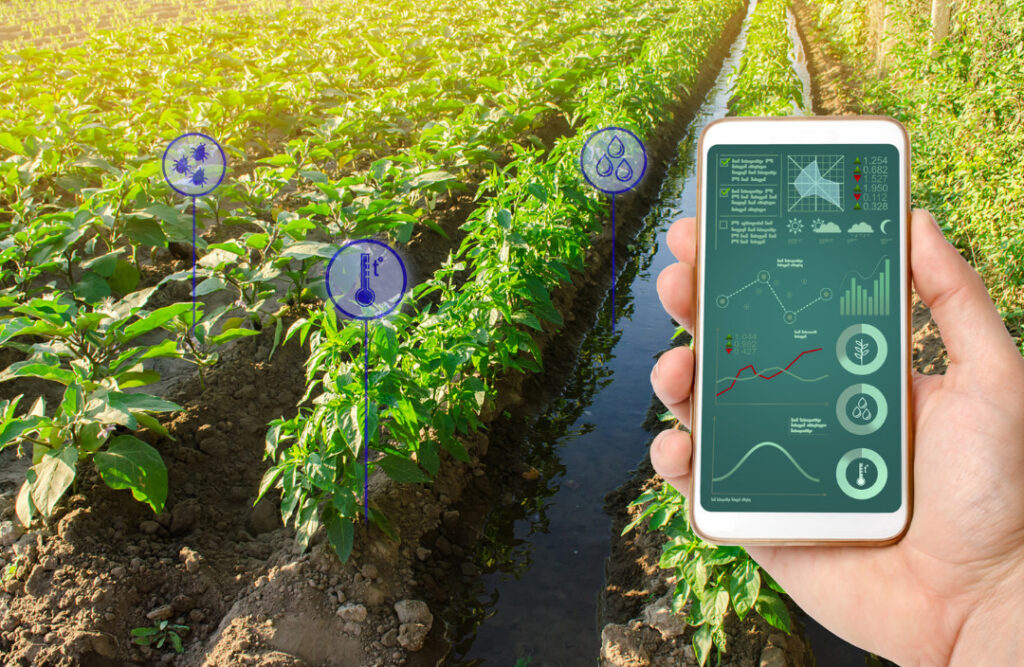Precision agriculture, often referred to as smart farming or precision farming, is a modern approach to agriculture that leverages technology to optimize various aspects of crop and livestock production. This revolutionary method is reshaping the agricultural industry, enhancing efficiency, sustainability, and profitability. We will explore the concept of precision agriculture, its key components, benefits, and its potential to address some of the world’s most pressing agricultural challenges.
1. What is Precision Agriculture?
It is a farming system that relies on data-driven decisions and technology to maximize the efficiency and sustainability of agricultural operations. It involves the use of various technologies such as GPS, sensors, drones, and data analytics to monitor and manage the various aspects of farming. The goal is to tailor agricultural practices to specific field conditions, optimizing resource use and minimizing waste.
2. Key Components
Data Collection and Analysis:
- Soil and Crop Sensors: These sensors collect data on soil moisture, nutrient levels, and crop health. This information helps farmers make informed decisions about irrigation and fertilization.
- GPS Technology: GPS systems are used to precisely map fields and guide machinery during planting, harvesting, and other activities.
- Satellite Imagery: Satellite imagery provides real-time data on crop growth, allowing for timely interventions.
- Weather Stations: Monitoring local weather conditions aids in planning activities and minimizing risks associated with adverse weather.

Farm Management Software:
Software platforms help farmers analyze the collected data, make informed decisions, and plan operations efficiently. Crop modeling software can simulate the effects of different management strategies, enabling more accurate predictions.
Automated Machinery:
Tractors, combines, and other machinery are equipped with GPS and automation technology, allowing for precise planting, harvesting, and other tasks.
Drones can be used for crop scouting, monitoring, and even pesticide application.

3. Benefits of Precision Agriculture
- Increased Crop Yields: Optimizing resource use, and tailoring practices to specific conditions, can significantly increase crop yields. This is vital in meeting the growing global demand for food and ensuring food security.
- Resource Efficiency: It minimizes the use of resources like water, fertilizers, and pesticides, reducing waste and environmental impact. It also helps in conserving energy and reducing the carbon footprint of farming.
- Cost Savings: Farmers can cut costs by using inputs more efficiently and reducing the need for manual labor. Automated machinery and technology-driven practices save time and labor expenses.
- Sustainable Farming: It promotes sustainable farming practices by reducing soil erosion, minimizing chemical runoff, and conserving natural resources. Sustainable agriculture is crucial for the long-term health of the planet.
- Data-Driven Decision-Making: Access to real-time data allows farmers to make informed decisions, respond to changing conditions, and adapt to market demands.
- Improved Crop Quality: It can enhance crop quality, resulting in products that meet higher standards and fetch better prices in the market.
4. Constraints and Barriers
- Initial Investment: The adoption of precision agriculture technologies can be expensive, which may deter small-scale farmers from embracing this approach.
- Technical Knowledge: Farmers need training to effectively use and interpret the data collected by precision agriculture tools.
- Data Security: The collection and storage of data raise concerns about security and privacy.
- Infrastructure: Access to reliable internet connectivity in rural areas is essential for real-time data transmission and access to online tools.
5. Precision Agriculture and Global Food Security
It has a pivotal role to play in addressing the global food security challenge. As the global population continues to grow, there is an increasing demand for food production. Precision agriculture’s ability to maximize yields while minimizing resource use is instrumental in meeting this demand. Moreover, it can help adapt to changing climate conditions and reduce the environmental impact of agriculture, making it a crucial tool in ensuring sustainable food production.
6. Success Stories in Precision Agriculture
- United States: Precision agriculture adoption has been widespread in the U.S., leading to increased productivity and sustainability in corn, soybean, and wheat production.
- Netherlands: Dutch farmers have embraced precision agriculture to maximize space and reduce water usage in greenhouse vegetable production.
- India: In India, precision agriculture technologies are being used to address water scarcity issues and optimize resource use in rice and wheat cultivation.
Conclusion
Precision agriculture is at the forefront of a farming revolution. It offers an array of benefits, from increased yields and resource efficiency to cost savings and sustainability. While challenges and barriers remain, the adoption of precision agriculture technologies is growing globally. As the world grapples with the challenges of feeding a growing population while minimizing the environmental impact of agriculture, it represents a promising path forward. By harnessing the power of technology and data, it is revolutionizing the way we farm, ensuring a brighter and more sustainable future for agriculture and the world as a whole.
FAQs
It, often called precision farming, is an innovative approach that utilizes technology, data, and analytics to optimize various aspects of agricultural production. It enables farmers to make data-driven decisions for improved efficiency and sustainability.
It offers benefits such as enhanced crop management, resource efficiency, cost savings, environmental sustainability, and increased yields.
It allows farmers to monitor crop health and growth in real time, enabling timely interventions like precise irrigation and the application of fertilizers. This leads to higher yields and reduced resource wastage.
It minimizes resource wastage by precisely controlling the application of water, pesticides, and fertilizers. This reduces costs and environmental impact.
Key technologies for precision agriculture include GPS technology for accurate planting and harvesting, Variable Rate Technology (VRT) for customized resource applications, remote sensing using satellites or drones, and farm management software.